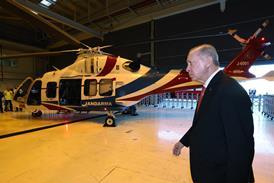Company to trade speed and handling for increased range and payload capacity for USAF bomber requirement
Lockheed Martin's newest designs for a bomber variant of the F/A-22 Raptor show a steady shift in design philosophy to prize range and payload capacity over speed and manoeuvrability.
An initial FB-22 concept revealed in 2001 retained the air-superiority fighter's wing and tails, but stretched and widened its fuselage. This roughly doubled its range and weapons capacity, and retained its Mach 2 maximum speed. A new configuration drafted earlier this year preserves the F/A-22's fuselage, while dramatically expanding the size and changing the shape of its wings. The new design reduces top speed to M1.92, but trebles range and increases total weapons payload to 15,000kg (33,000lb).
Lockheed Martin attributes the design changes largely to concerns about affordability. Further studies of the first FB-22 design showed that changing the fuselage carried heavy cost penalties, including the need to build a separate production line. The new 6g-limited design's clipped-delta wing can be handled within the current assembly process.
The FB-22 is widely viewed as the US Air Force's preferred choice for a proposal to field about 50 bombers with "global reach" from 2015. It was among 23 proposals submitted by industry early last year, and the air force is now devising requirements and a budget strategy for the programme.
The FB-22 will share 85% hardware and software with the USAF's F/A-22 Spiral 5 aircraft. Lockheed Martin's pricing strategy depends on inserting the design into the production line in 2012, two years before the USAF receives its last of 277 planned F/A-22s. The FB-22's cockpit avionics, radar, engine core, fuselage and tails will be common with the Spiral 5 design.
Lockheed Martin plans to bulge each FB-22 weapons bay door to allow a 1,000kg Joint Direct Attack Munition to be installed on each side of the internal bay. The bomber will also be fitted with two 2,270kg-capacity weapons bays on the wing's inboard stations, with each capable of carrying six 250kg Small Diameter Bombs. An outboard station also could be used to carry a fuel tank or stealthy cruise missile, such as an advancedversion of the Lockheed MartinAGM-158 Joint Air-to-Surface Standoff Missile.
STEPHEN TRIMBLE / WASHINGTON, DC
Source: Flight International























